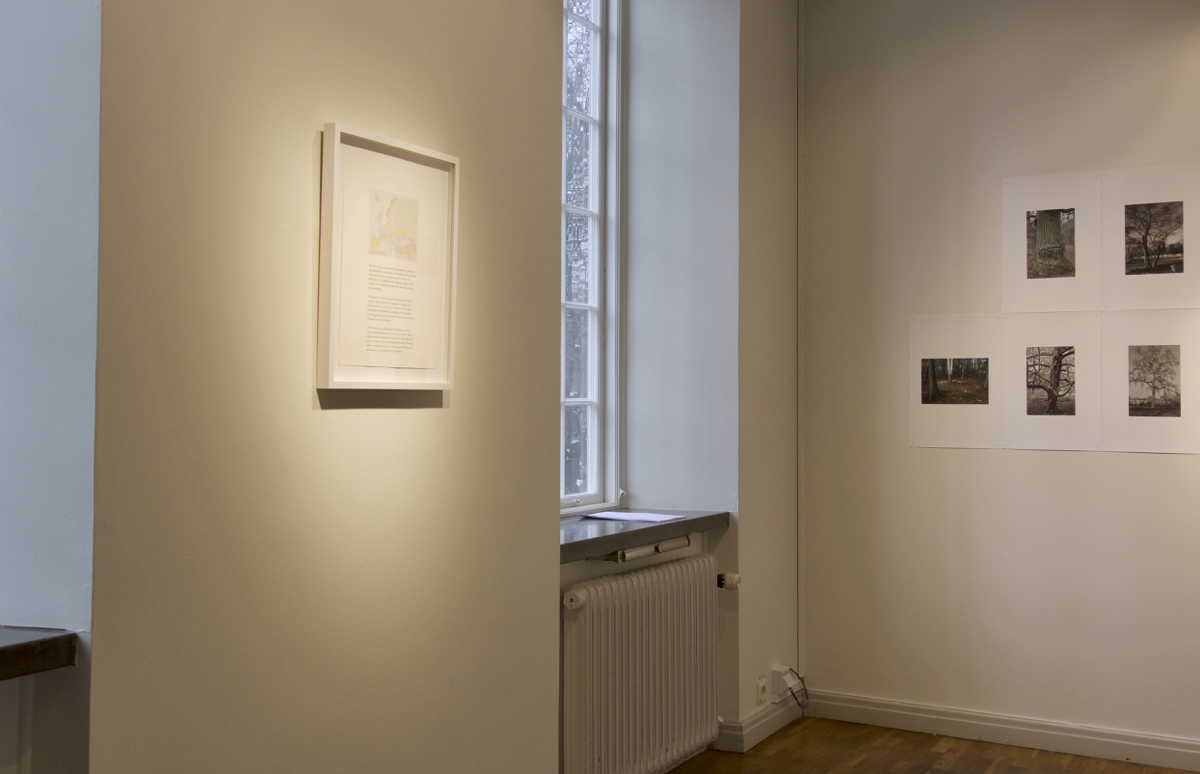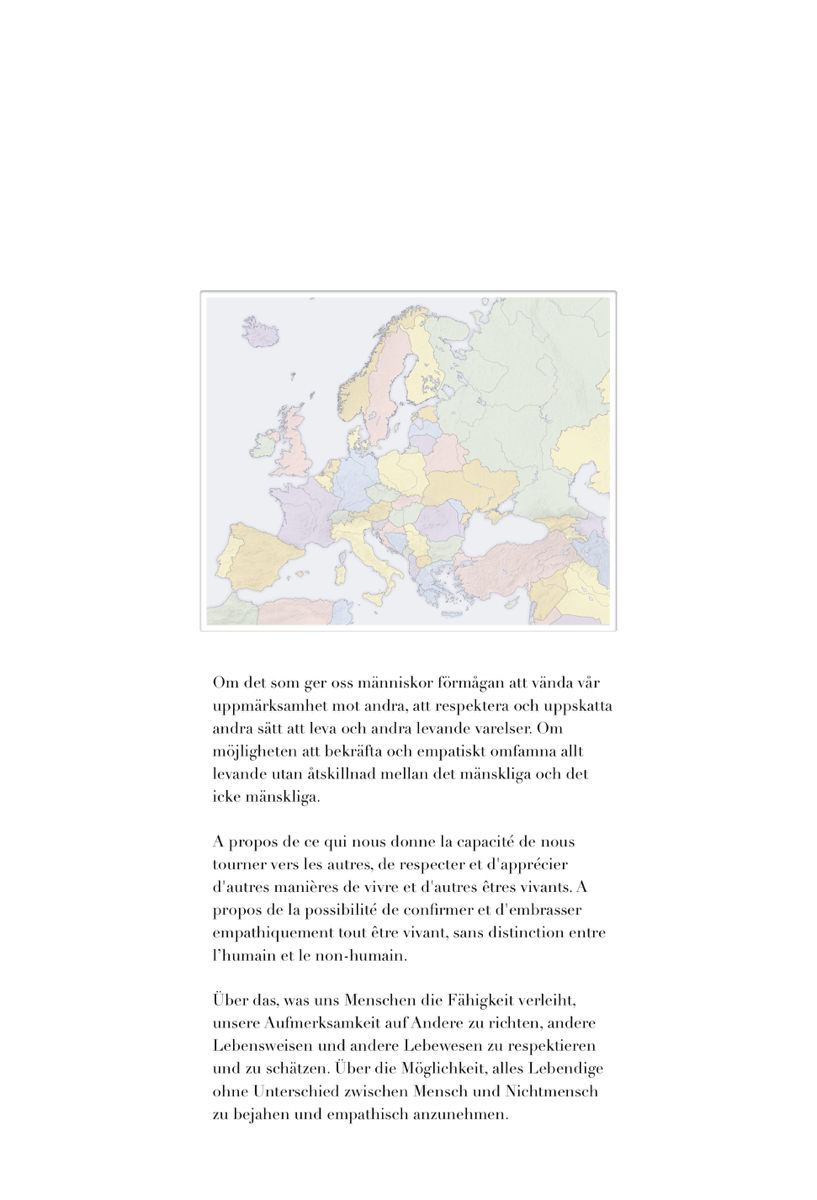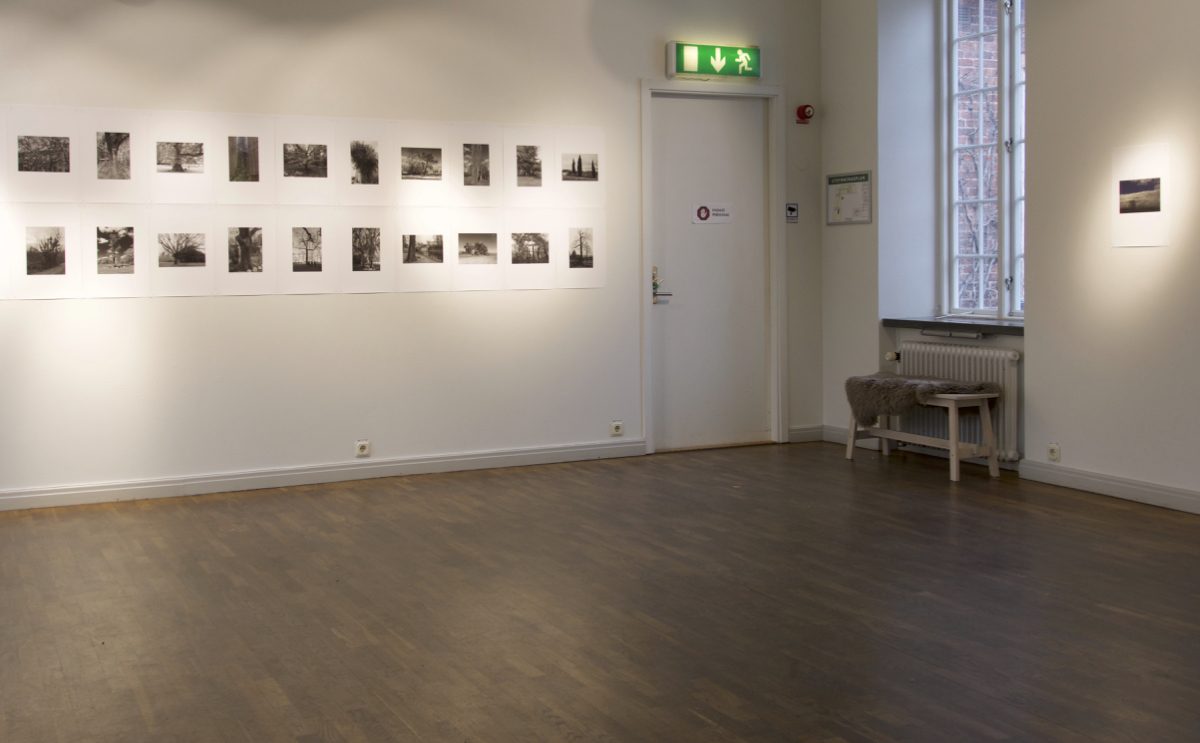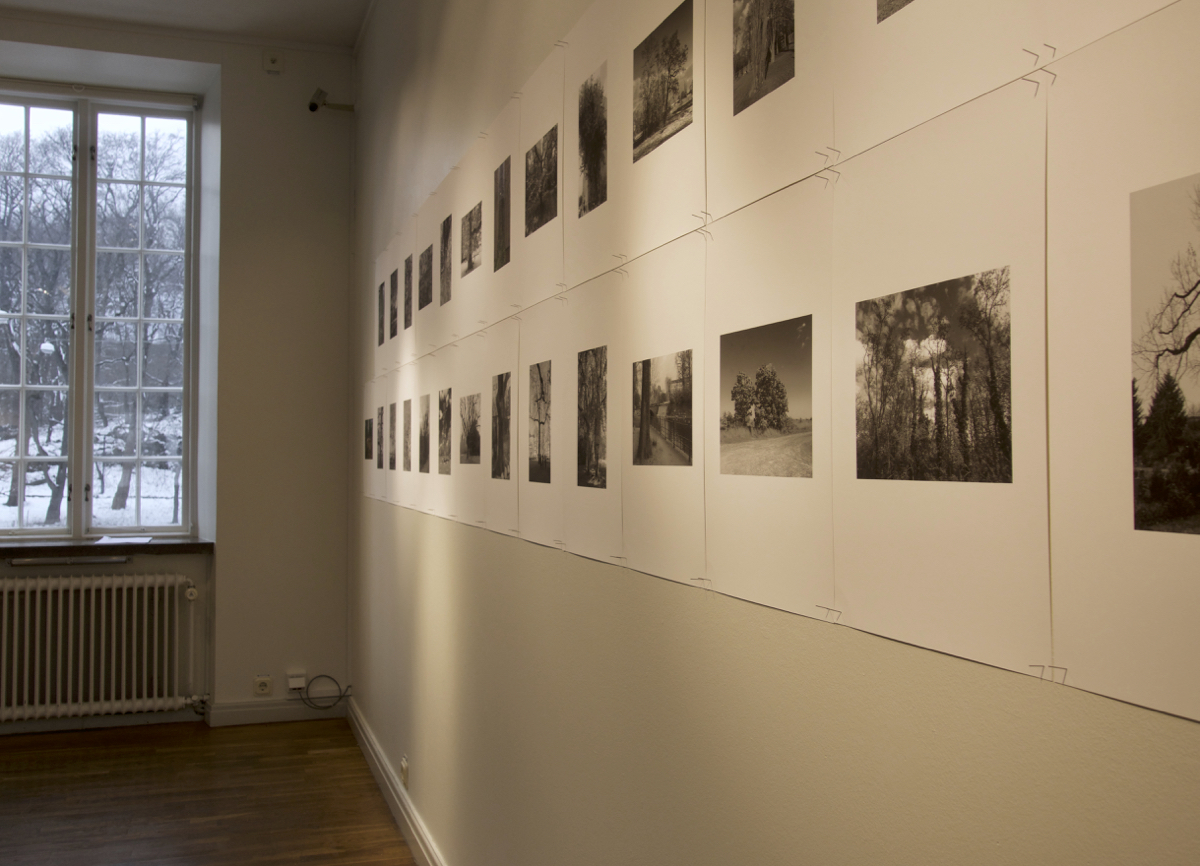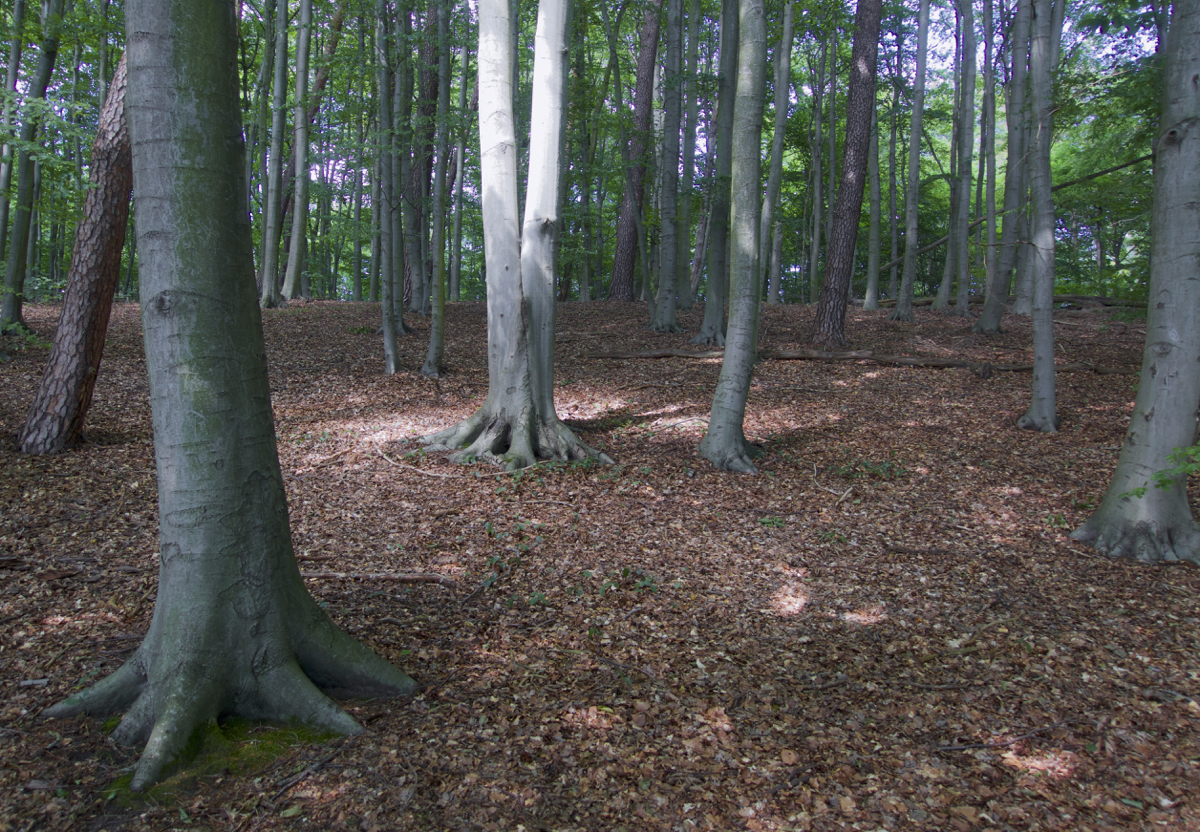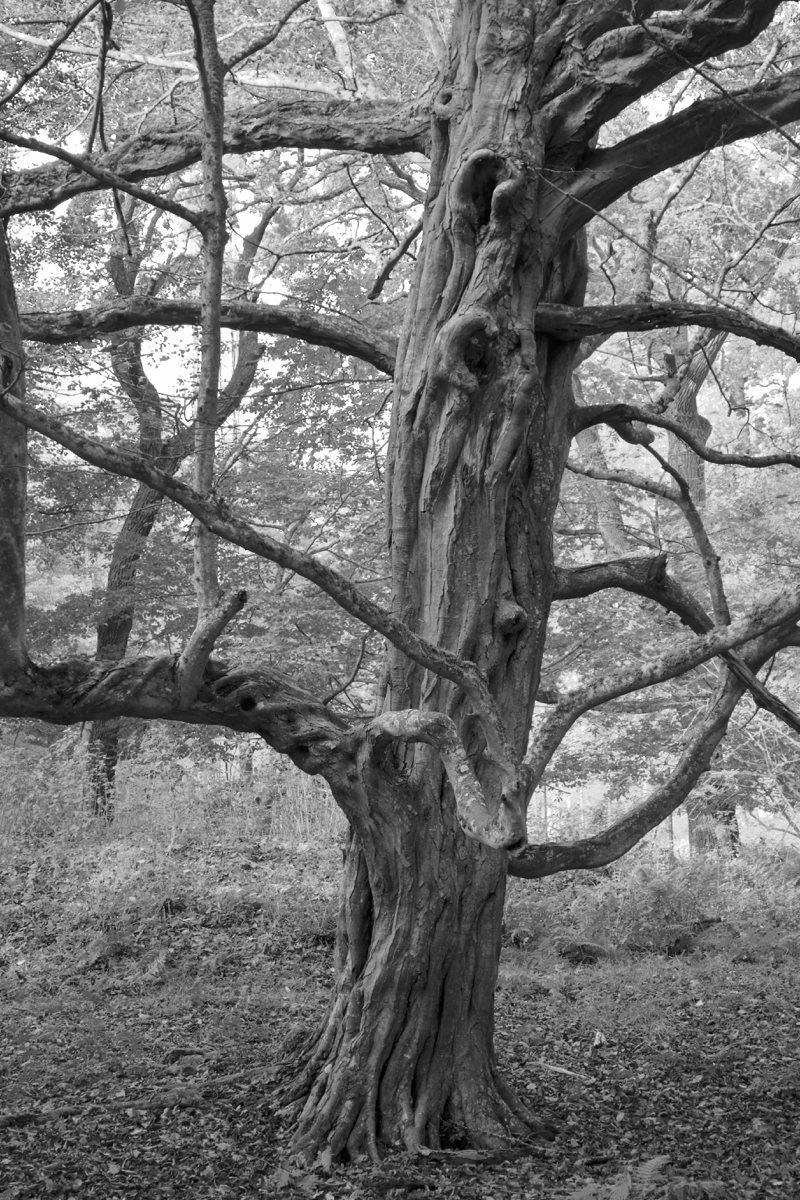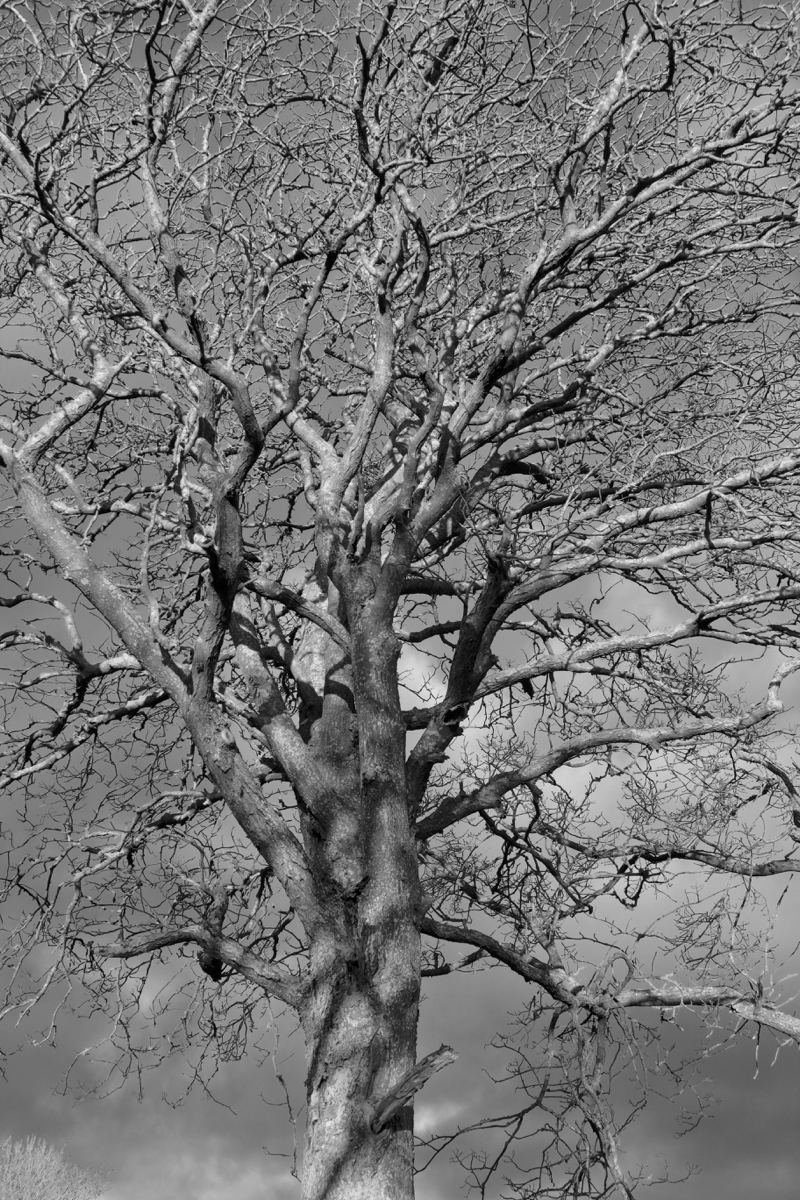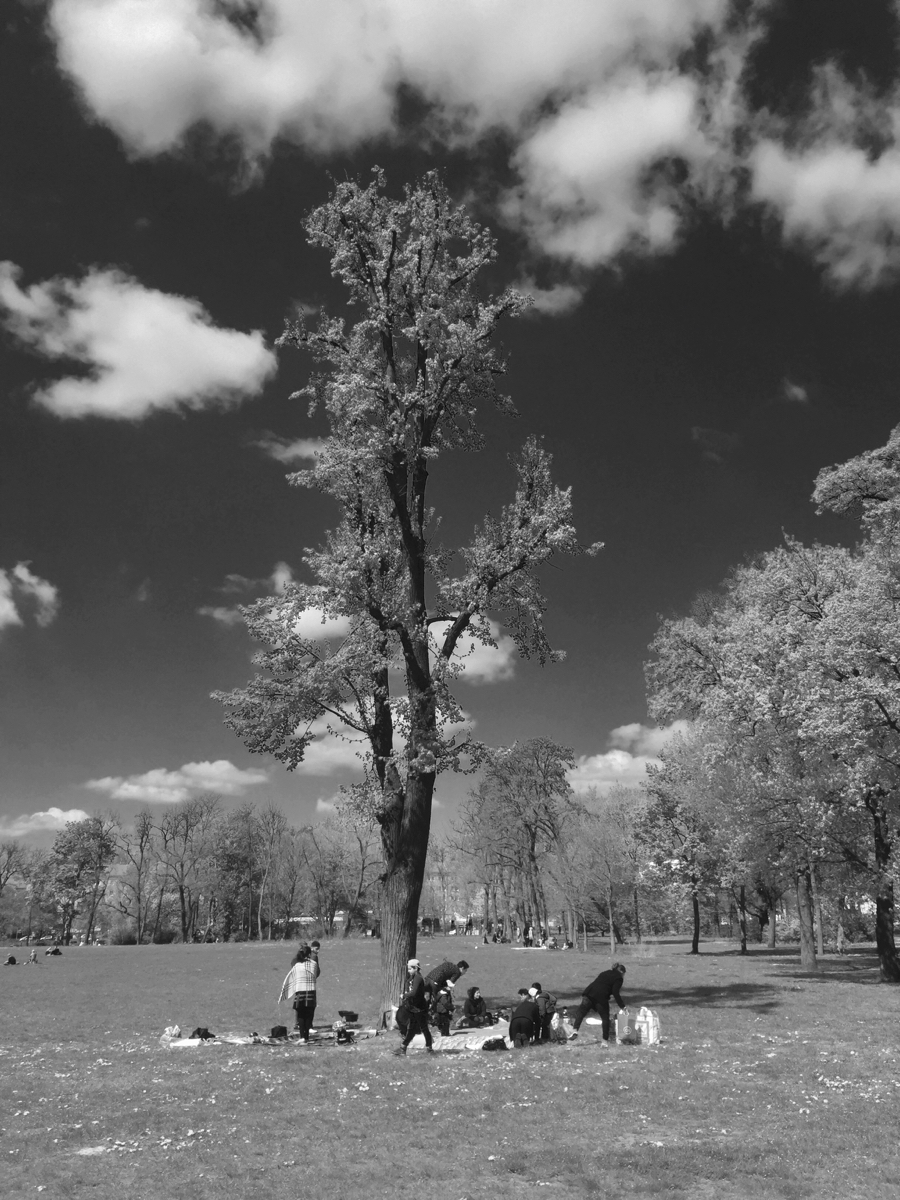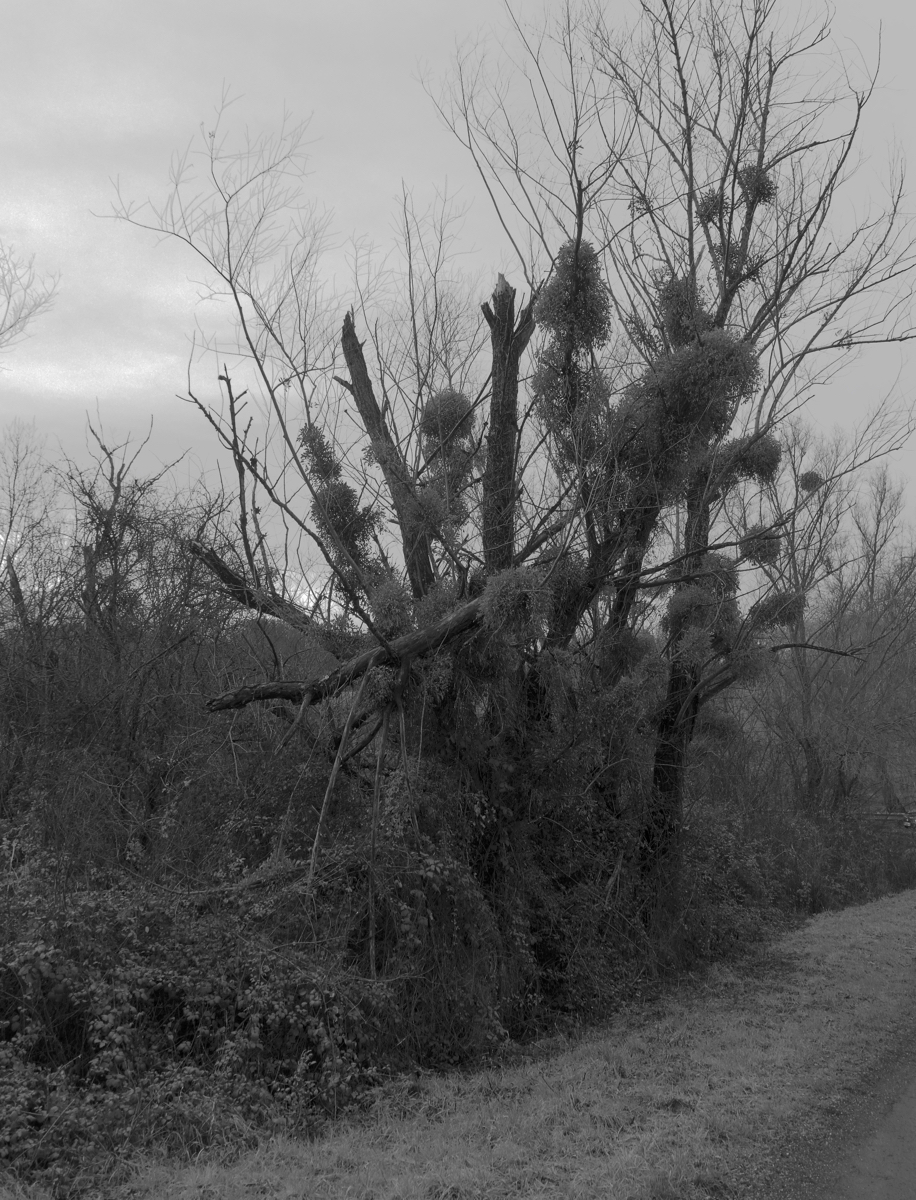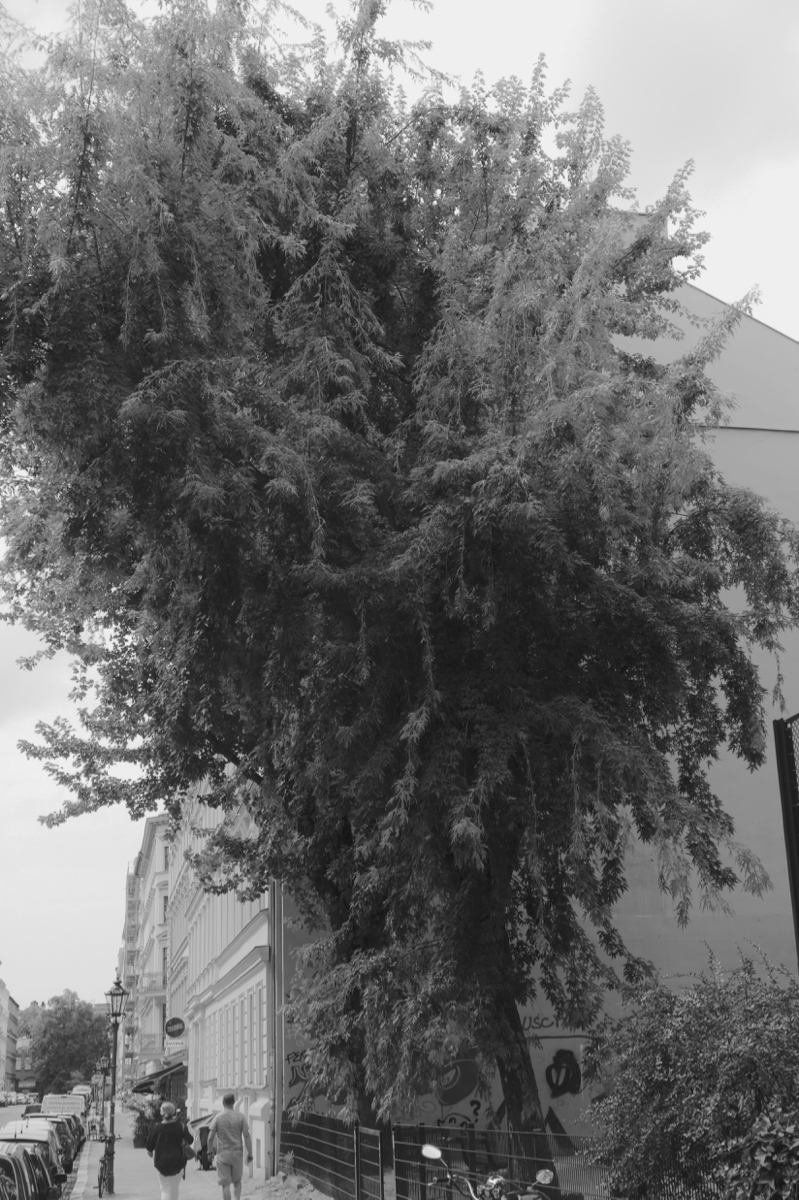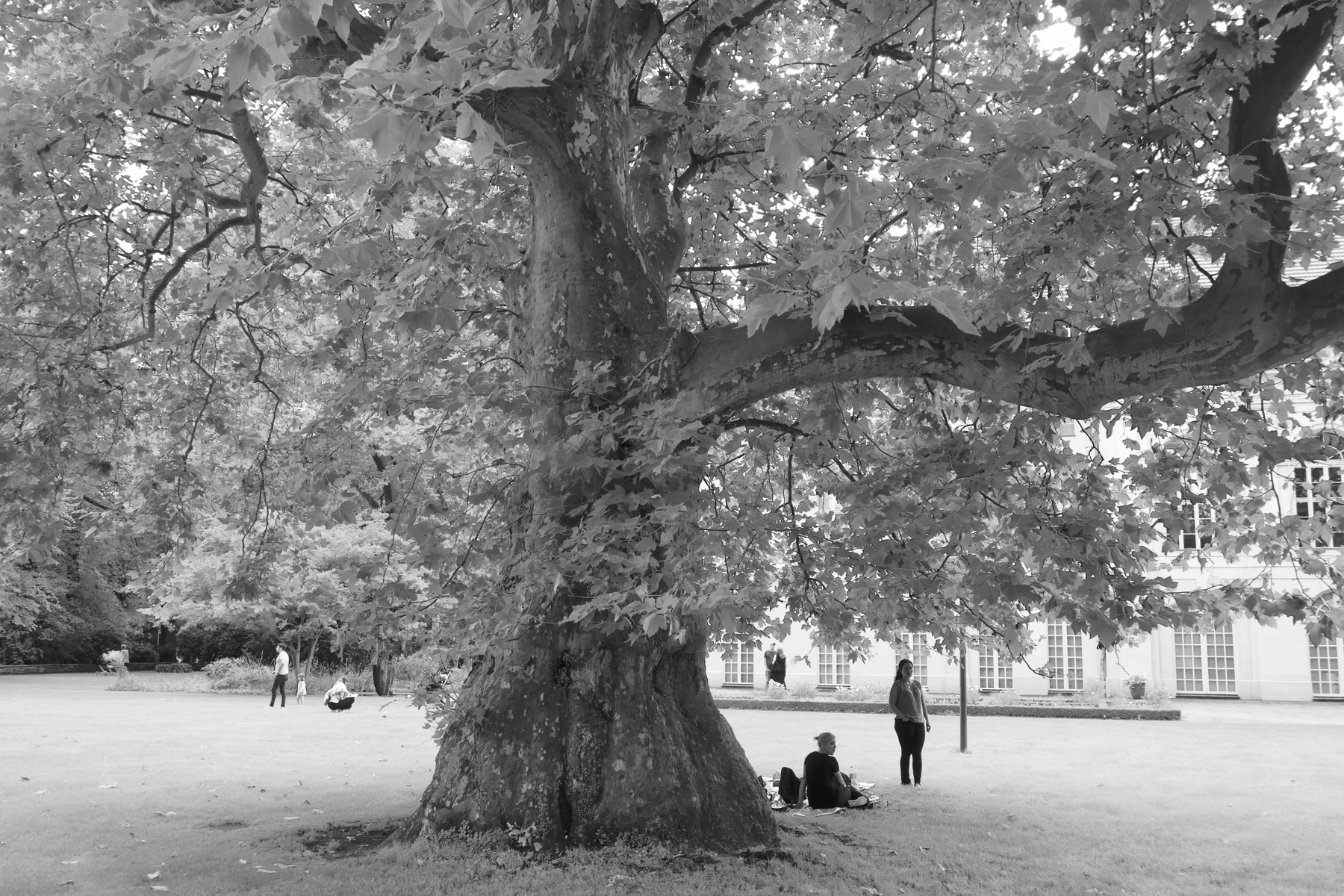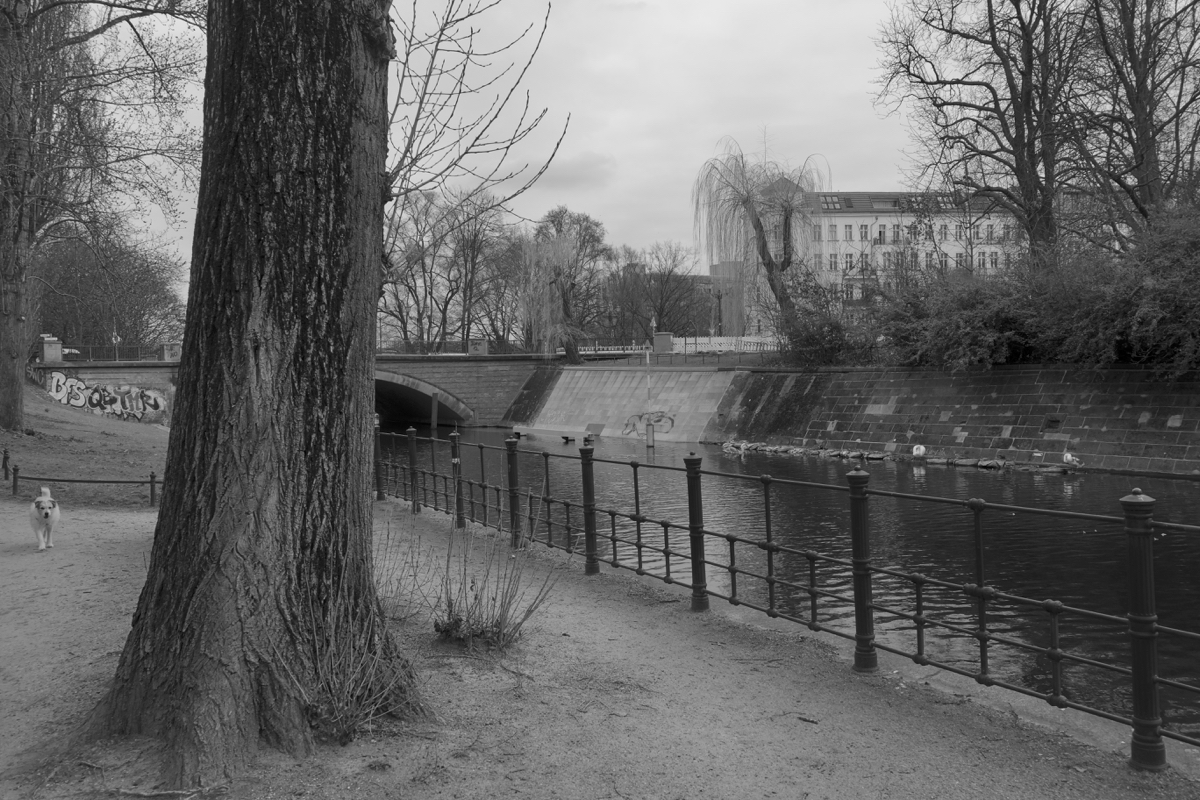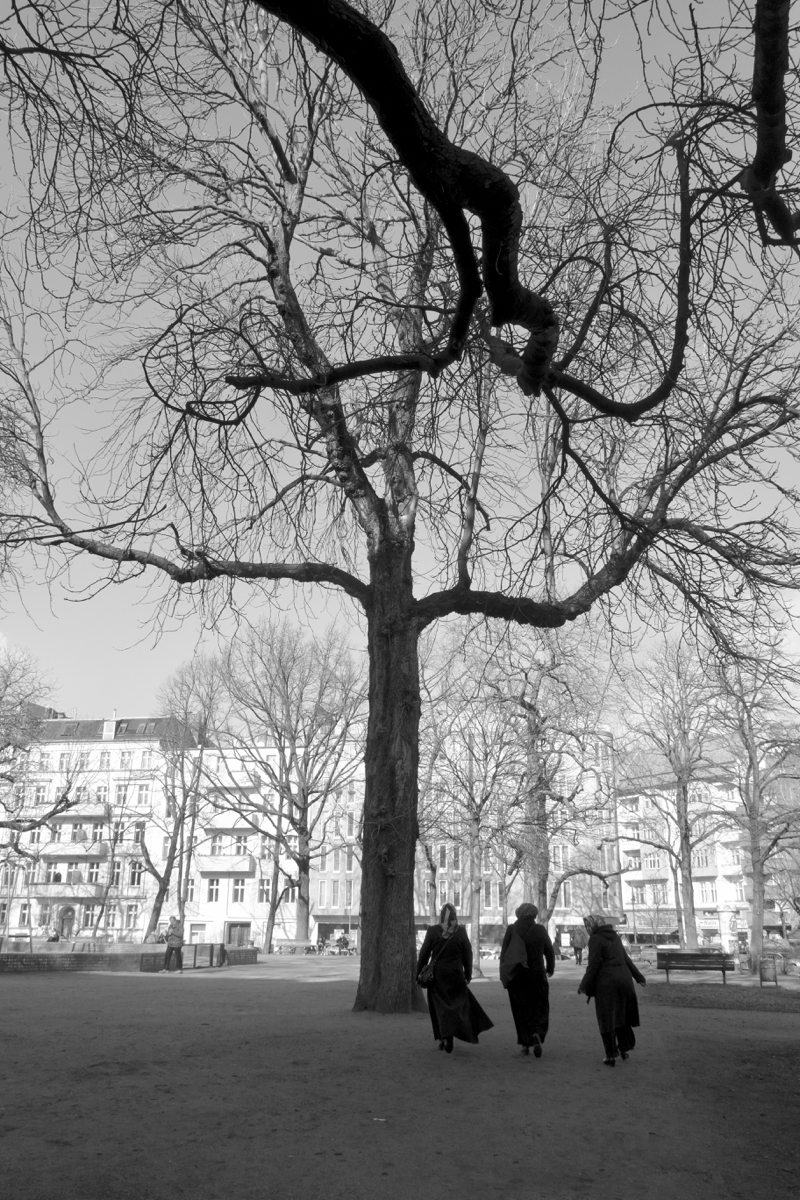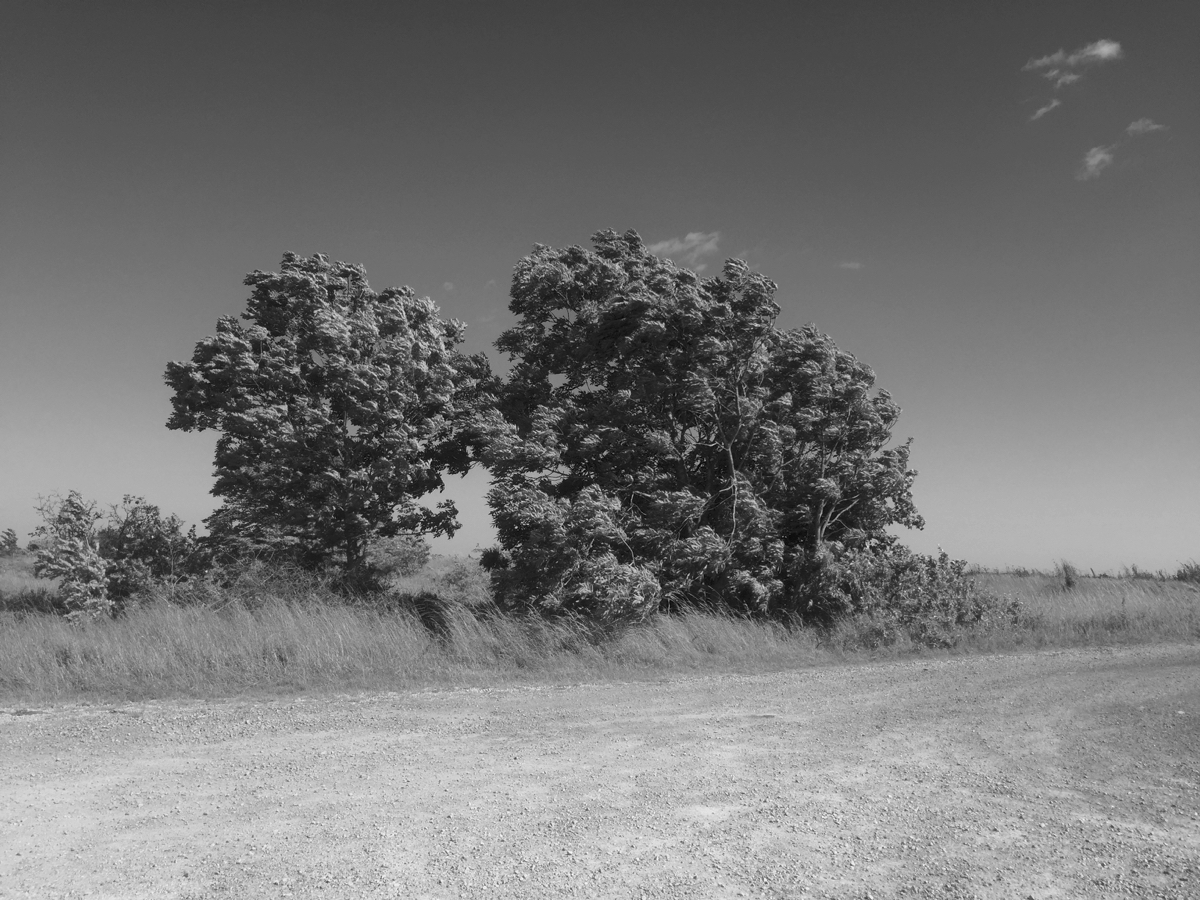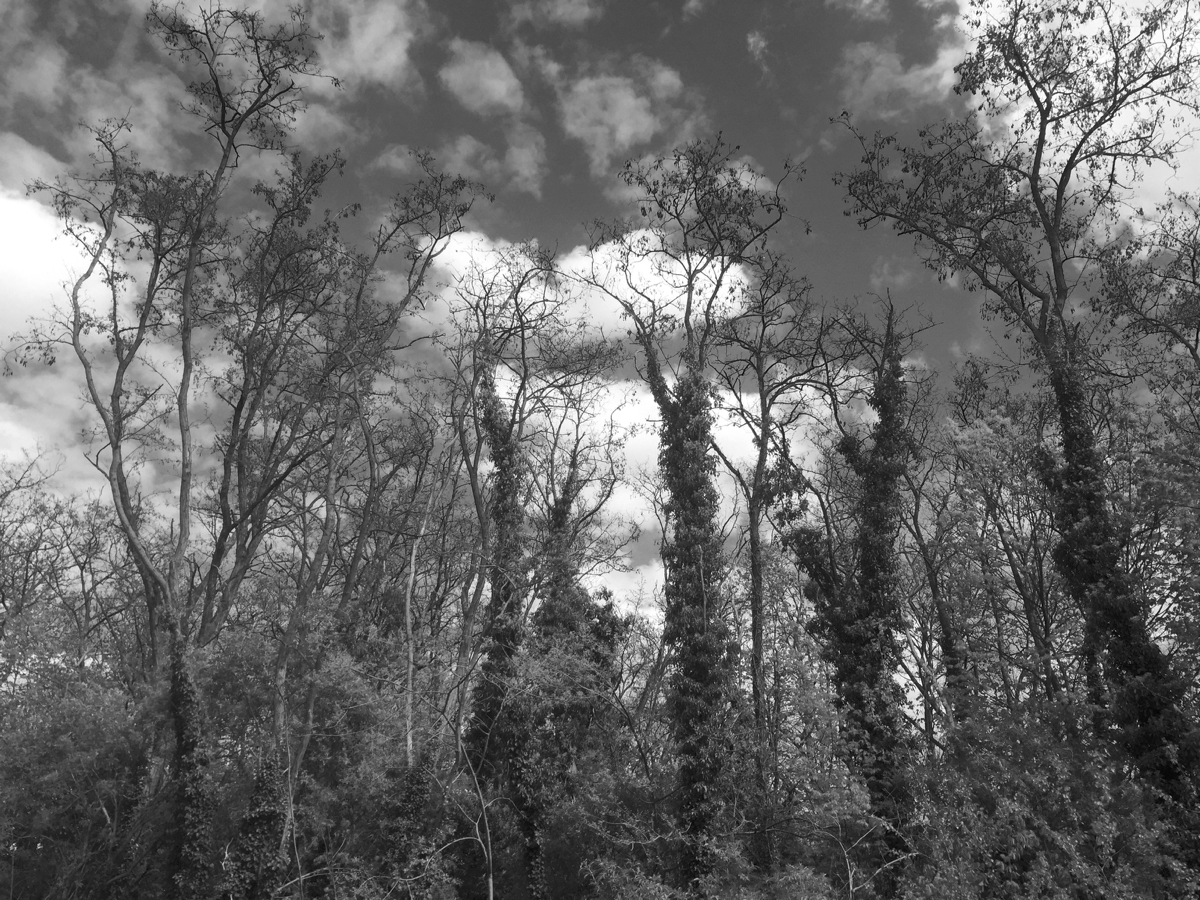Trees On Paper
Exhibition in Gothenburg Botanical Garden, Sweden, 28 March 28 – May 1, 2018
29 Archival prints on paper, 33×48 cm, 2018
Exhibition text in English and Swedish below.
The exhibition consists of a series of photographs of trees, taken in places I have passed in recent years. There is no system, the images are the result of the impulse of the moment, from the front, at eye level, almost as if I was meeting a friend. I have revisited most of the trees and photographed them repeatedly. In a way they have sort of become my friends. The title of the exhibition – ”Trees On Paper" is a tautology as the paper the images are printed on mostly consist of wood. The title also refers to the convention of how to describe the material of an artwork, for example "oil on canvas". Together, they point to the relationship of the image and its materiality, which embodies the illusion that the image creates. It underlines the basic conditions of the image rather than imposing an educational or symbolic assignment on them. A text has been added to the photographic series in the form of a brief credo (a confession of faith). The credo is translated into the three languages spoken where the photographs are taken, as if the trees cared about our way of communicating, dividing and sharing the world. Showing photographs of trees in a botanical garden seems almost excessively self-evident. By virtue of this obviousness, the images are exposed and opened for readings other than a simple record of time, space and species. The intention of the photographs is not primarily to present the existence of these trees. It is more about the interaction between image, illusion and the one who sees the exhibition. In short, it’s rather about the subjective reality and the possibility of being in the exterior and the interior of things at the same time, beyond the photograph’s stubborn insistence on the outside appearance of reality. Photographs depict and represent, consolidate and ritualize. Contrary to the illustrative ability of photography, art's most important means of action is however, a consciously inserted balance, a balancing act sufficiently acrobatic to take you to a place you have not been before. The exhibition seeks through this act to renegotiate power positions between the human and non-human. The trees continue their lives with dignity, often with a much longer perspective of time than ours, despite the resistance in the environments and the attitudes we offer them. I believe this renegotiation holds a hope that concerns the very idea of the individual. Sven-Eric Liedman1 expresses it this way: "Individualism is a typical modern concept. Yes, even the individual as the designation of a human being is modern. It can be attributed to France in 1750, which is the great breakthrough of French Enlightenment. The individuum in Latin is, of course, much older, but in earlier philosophies, identified any particular phenomenon - a silica stone, a henbane, in short, all that could be perceived as a unity in contrast to the general concept of the species as henbane or that which makes the silica stone a silica stone. With the Enlightenment man became the privileged individual and soon the only one. (...) A dream of another and more interesting individualism, is not a dream of a past society where everything was better, but a dream of a more advanced civilization where we are able to grow."2 Translation: Magnus Johansson, Derek Gripper 1Professor Emeritus in History of Ideas and Literacy 2Dagens Nyheter, February 27, 2018
Utställningen består av en serie fotografier av träd tagna på platser jag passerat de senaste åren. Det finns inget system, bilderna är resultatet av stundens ingivelse, frontalt, oftast i ögonhöjd, ungefär som om jag mött en vän. De flesta träden har jag återbesökt och fotograferat upprepade gånger, dom har så att säga också blivit mina vänner. Utställningens titel – ”Träd på papper” är en tautologi då pappret bilderna är printade på till största delen består av just trä. Titeln refererar också till konventionen kring hur man inom konsten beskriver det material som används, till exempel ”olja på duk”. Tillsammans pekar det mot bildens relation till dess materialitet, det som bär fram illusionen bilden skapar. Titeln stryker på så sätt under bildens grundläggande förutsättningar snarare än att ålägga fotografierna ett pedagogiskt eller symboliskt uppdrag. Till serien av bilder har jag också lagt en kort text i form av ett credo (en trosbekännelse). Credot är översatt till de tre språk som talas där fotografierna är tagna, som om träden brydde sig om vårt sätt att kommunicera, indela och dela världen. Att visa fotografier på träd just i en botanisk trädgård ter sig nästan överdrivet självklart. I kraft av denna självklarhet friläggs och öppnas bilderna för andra läsningar än en enkel registrering av tid, plats och art. Avsikten med bilderna är inte i första hand att redovisa att dessa träd finns. Det handlar snarare om samspelet mellan bild, illusion och den som ser utställningen. Kort sagt, om den subjektiva verkligheten, om möjligheten att samtidigt befinna sig i det yttre och det inre, bortom fotografiets envisa insisterande på verklighetens utsida. Fotografier avbildar och förevisar, befäster och ritualiserar. I motsats till fotografiets illustrativa förmåga är dock konstens viktigaste verkningsmedel en medvetet iscensatt balansakt, en balansakt tillräckligt akrobatisk att föra dig till en plats du inte varit förut. Utställningen försöker genom denna akt att omförhandla maktpositionerna mellan människa och icke-människa. Träden fortsätter sina liv med värdighet, ofta med betydligt längre tidsperspektiv än våra, trots motståndet i de miljöer och de attityder vi erbjuder dem. Denna omförhandling tror jag rymmer en förhoppning som berör själva idén om individen. Sven-Eric Liedman1 uttrycker det så här: ”Individualism är ett typiskt modernt begrepp. Ja även individ som beteckning på en enskild människa är det. Det kan beläggas till Frankrike 1750, som är den franska upplysningens stora genombrottsår. Latinets individuum är givetvis mycket äldre men betecknade tidigare i filosofin vilken enskild företeelse som helst – en kiselsten, en bolmört, kort sagt allt som kunde uppfattas som en enhet i motsats till allmänbegrepp som arten bolmört eller det som gör kiselstenen till kiselsten. Med upplysningen blev människan den privilegierade individen och snart den enda. (…) En dröm om en annan och intressantare individualism är inte en dröm om ett förflutet samhälle där allt var bättre utan en dröm om en mer avancerad civilisation där vi får möjlighet att växa.”2 1Professor emeritus i idé- och lärdomshistoria 2Dagens Nyheter, 27 februari 2018

